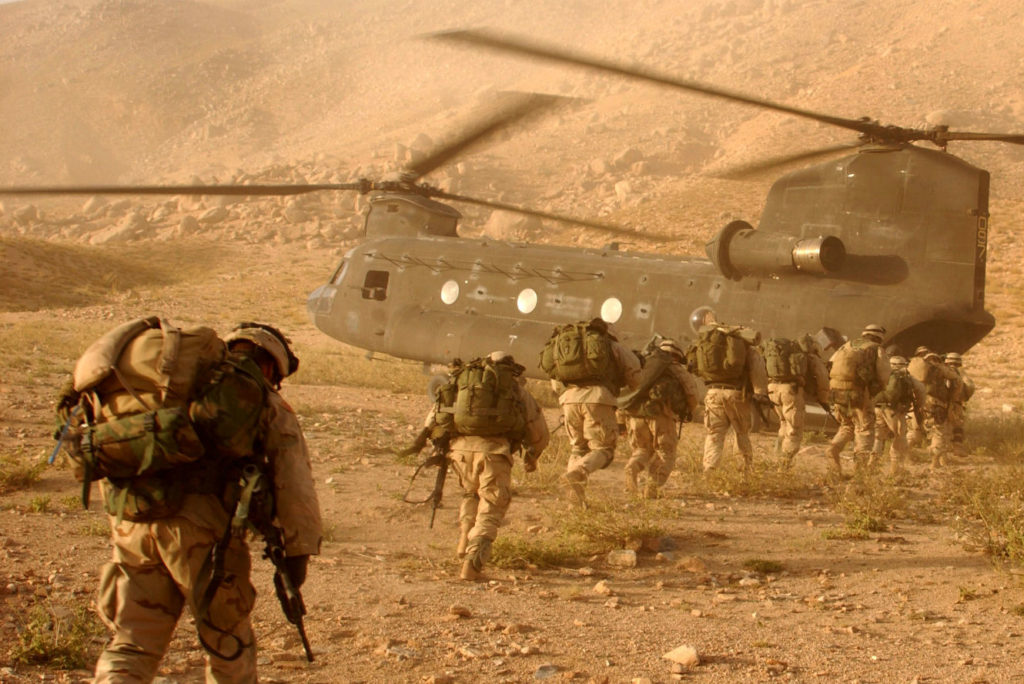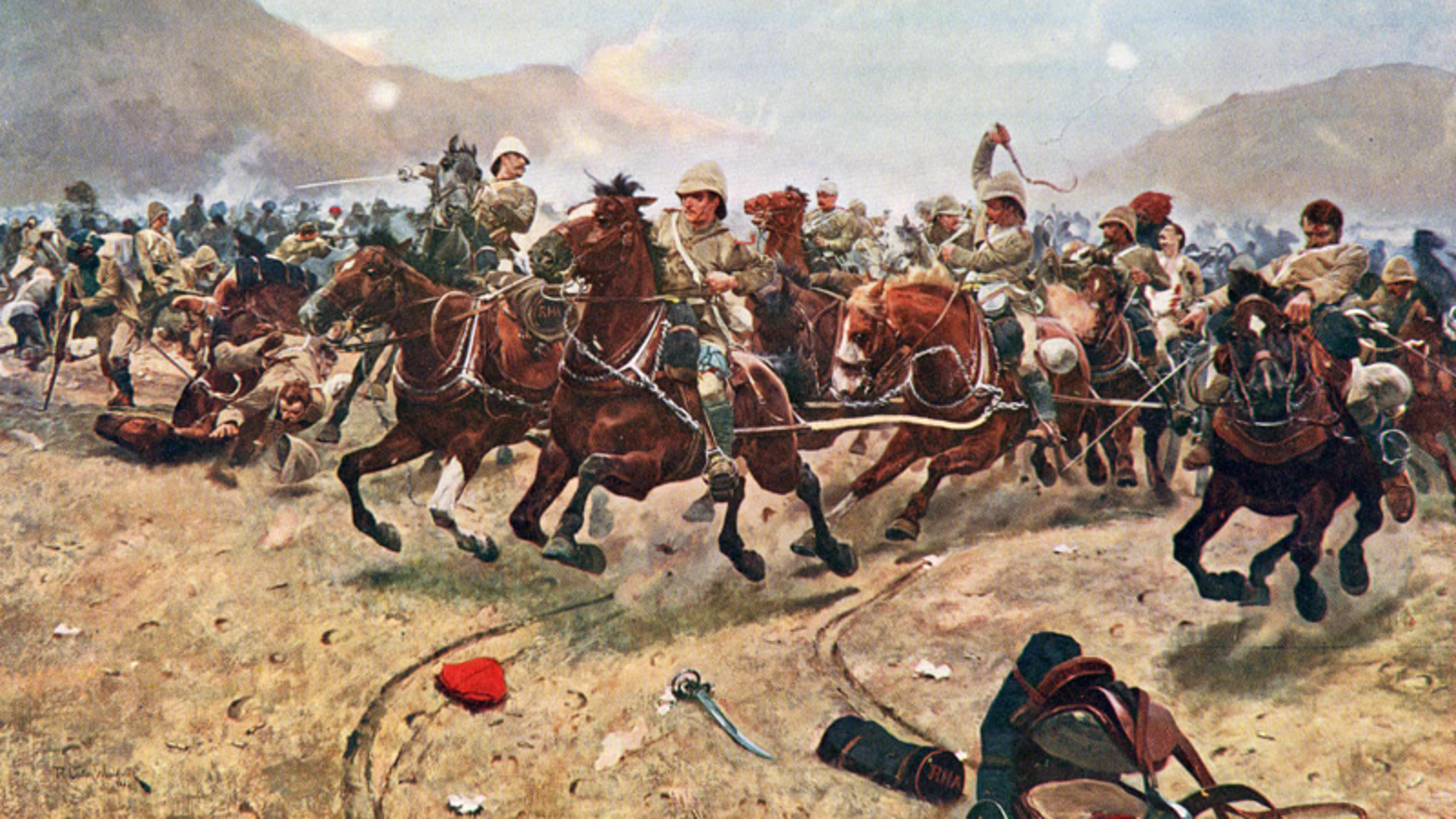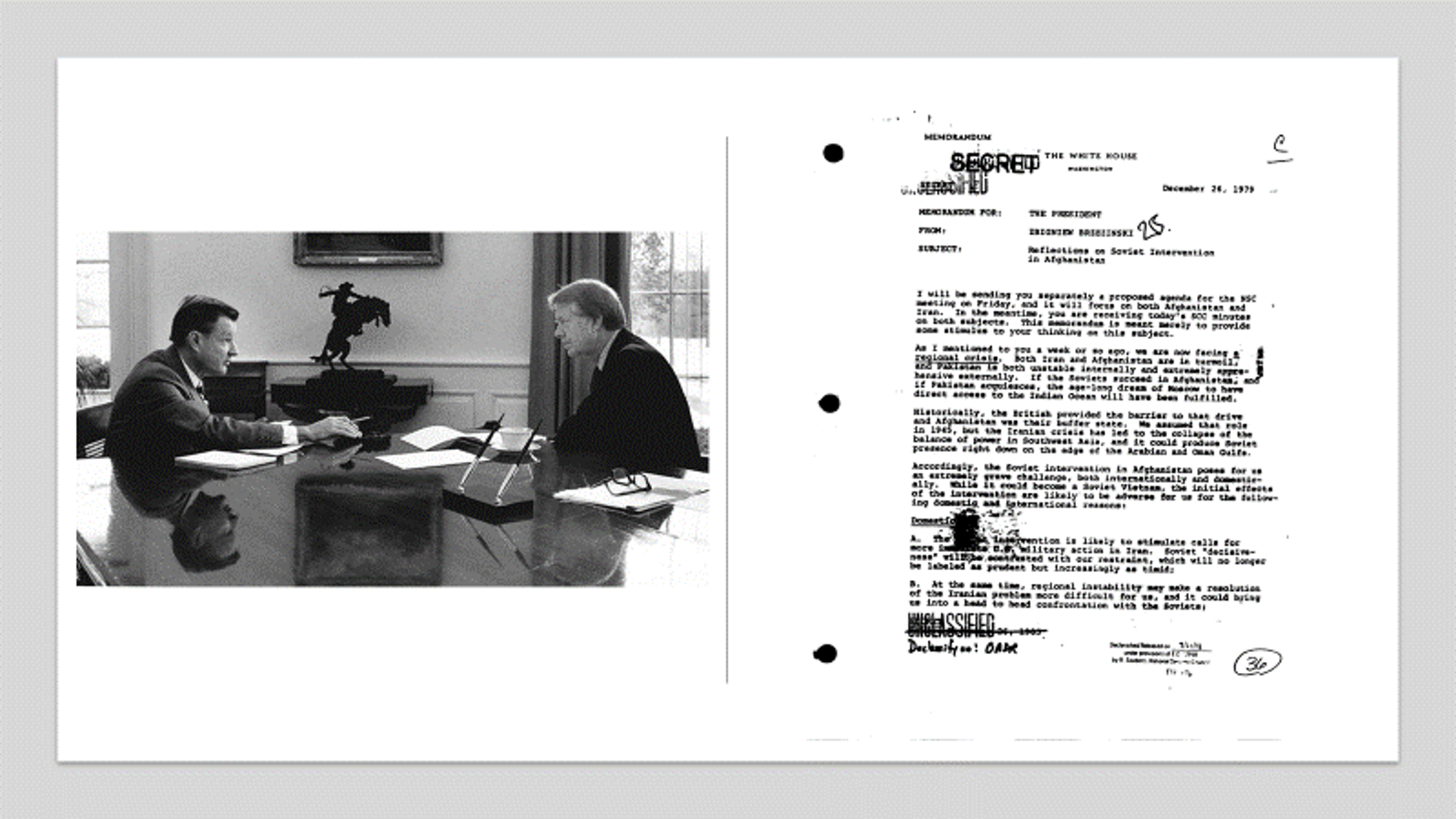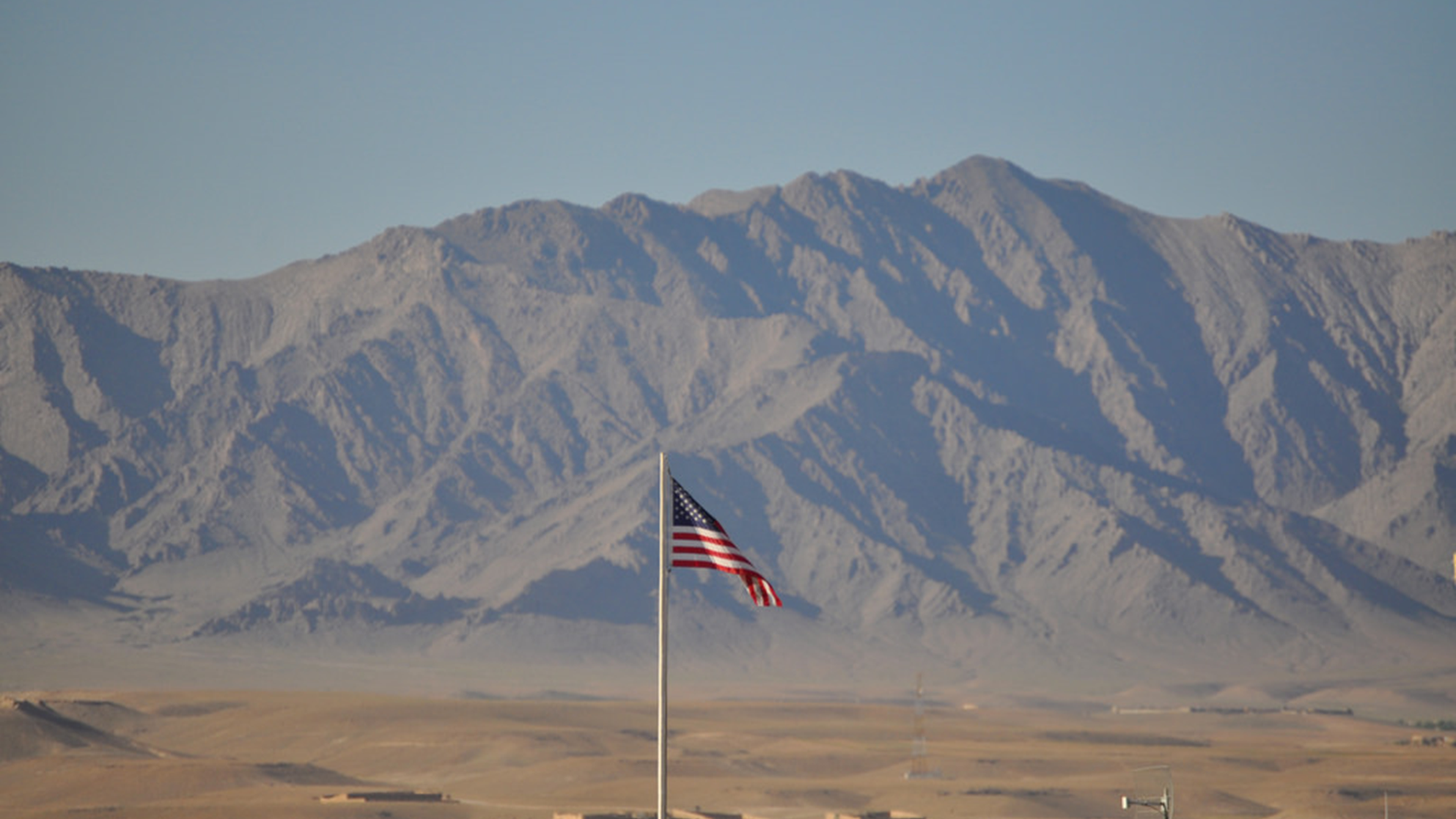Afghanistan: Remembering the Long, Long War We Would Rather Forget

Should I stay or should I go now?
Should I stay or should I go now?
If I go, there will be trouble
And if I stay it will be double
Joe Strummer and Mick Jones, The Clash
On a blistering summer day in 2011, I stood with members of 10th Mountain Division’s Task Force Spartan on the ramparts of the caravansari in Maiwand, long-abandoned alongside the Ring Road west of Kandahar. President Barack Obama’s time-bound surge had put enough troops on the ground to take back most of the Taliban heartland, and the grizzled former mujahedeen commander with us was pointing out their remaining pockets. “Give me 100 guns and I’ll clean them out for you,” he said. We had heard that boast many times, the Afghan way of war tinged with the evanescent promise of Western riches.
The American flag flew from the forward operating base on the other side of the improvised explosive device-scarred highway, and Taliban leader Mullah Omar’s old mosque sat not far away. But the view proffered history with a much larger sweep: A Soviet BMP, destroyed in a forgotten ambush during the 1980s, poked at an impossible angle from the edge of a wadi. Just beyond lay the site of the Battle of Maiwand, where on July 27, 1880, tribesmen and the Afghan army had routed two over-confident brigades of British and Indian troops during the Second Anglo-Afghan War. Less than a quarter-mile away, a high mound rose from the desert floor, eroded walls of mud brick visible through binoculars — one of “Iskandar’s Towers,” erected by Alexander the Great in the 3rd century B.C. to guard the southern arm of the Silk Road against Persian marauders. When one of us said something about how long it was since Operation Enduring Freedom began after Sept. 11, 2001, our mujahedeen companion politely chided, “Ah, we have been at war for over 30 years and now you are back.”

The Afghanistan archive of this publication is rich with forward-looking recommendations for accidental counter-insurgents, nation-builders, and would-be peacemakers. However, there is also purpose in looking backward to the origins and consequences of U.S. involvement in Afghanistan during the final phase of the Cold War. The value lies not in building a “lessons of history” checklist but in grasping how tentacles of the decade spent weaponizing Islam in order to kill Soviets in a gray-zone war entangle us today. This record of the past helps explain that if Afghanistan remains a source of insecurity so intractably at war, it is not so much the fault of intractable Afghanistan as it is of the United States for failing at classic problems of policy and strategy. Why have three administrations — George W. Bush, Obama, and now Donald Trump — been so ambivalent about American aims and therefore about the level of effort and duration applied to achieving them? Why has victory in Afghanistan been impossible, success so elusive, and exit so difficult? Who is it that decides when a war is over anyway?
The Cold War was never a simple time to those who were involved in it. Afghanistan had been at reasonable peace since 1933, and the contemporary Great Game had settled into a complacency where Afghan strongman Daud Khan “was happiest when he could light his American cigarettes with Soviet matches.” This peace lasted until April 1978, when a coup by revolutionary communists provoked an Islamic rebellion and the country descended into factional violence, sucking the Soviet Union into a creeping intervention. President Jimmy Carter’s administration accommodated the new regime until the assassination of Amb. Adolph Dubs on Feb. 14, 1979 during a botched KGB-supervised attempt to rescue him from terrorist kidnappers fed the downward spiral that had already hardened Washington-Moscow relations. The first consideration of CIA options came in a meeting of the National Security Council Special Coordinating Committee in charge of covert action on March 5. In July, Carter approved a small political action program to support the burgeoning insurgency through Pakistan.
From the Soviet perspective, the ground forces that began crossing the Amu Dara River and the airborne troops that landed at Bagram Air Base on Dec. 24, 1979 were conducting a defensive stability operation, not invading Afghanistan. Doddering Premier Leonid Brezhnev reluctantly signed the order after months of vacillation, dismissing disaster warnings from senior military commanders, the ambassador, and several members of the Politburo. The Kremlin’s intent, modeled on Hungary in 1956 and Czechoslovakia in 1968, was a six-month mission to stem the jihadist rebellion and to replace their extremely radical communist client with less bloody-minded leadership. The Soviet Limited Contingent, as it was called, never gained the initiative.
The intervention was a shock to the U.S. administration, but it was no surprise. A now declassified memorandum that National Security Advisor Zbigniew Brzezinski sent to Carter on Dec. 26 offers a rare historical example in which it is possible to trace the origins of major consequences to a single document. In it, Brzezinski, the anti-Soviet son of a Polish diplomat, misused history by claiming that if Moscow succeeded “the age-long dream of direct access to the Indian Ocean will have been fulfilled.” The fall of the Shah of Iran in January had enflamed the Middle East into what Brzezinski termed an “arc of crisis;” Carter was facing a tough reelection challenge from Republican front-runner Ronald Reagan and badly needed to reverse the perception that his foreign policy was failing. The President began to hyperbolize that Moscow’s aggression in Afghanistan “would threaten the security of all nations.”

Determined to deliver the Soviet Union its own Vietnam, Brzezinski advised the president that it was essential that the Afghan resistance continue. Carter approved a covert action finding that increased the program, code-named Operation Cyclone, to $50 million. He took to calling the mujahedeen “Freedom Fighters” (a label that Ronald Reagan and Charlie Wilson later appropriated as they poured support into the program). Brzezinski outlined four courses of action in the Dec. 26 memo, each of which Carter approved. They would have enduring and fateful consequences.
First, the United States decided to channel U.S. assistance to the Afghan resistance via the government of Pakistan. This was an expedient. Mujahedeen fighters were already under the aegis of Pakistani Inter-Services Intelligence, and Pakistan had served as their sanctuary since the early 1970s. The CIA regarded direct management as infeasible and never seriously considered it. Rather than seeking to unify the fractious Afghan opposition, the Inter-Services Intelligence kept them under control by channeling assistance to seven chosen mujahedeen groups, with the most extreme among them receiving the bulk of aid.
The arrangement prompted Pakistan and the United States back into Cold War alignment but, with deeply diverging interests, the relationship was often duplicitous and fraught — hardly an alliance. Pakistani President Zia-ul-Haq was himself an Islamist with the ambitious vision of extending a Muslim coalition across the Middle East and neutralizing Pakistan’s arch-rival India by achieving “strategic depth” in Afghanistan. While Carter had to sacrifice his desire to punish Pakistan for human rights and nuclear proliferation violations, Zia was largely transactional. He did not receive the blank check he demanded from the United States, but over the course of the next decade more than $20 billion flowed to Pakistan in the form of military and economic assistance, funding for millions of Afghan refugees, and support to the mujahedeen.
The fundamentals of U.S.-Pakistani relations have not changed. They reverted to another low point after the Soviets left in 1989. The Inter-Services Intelligence continued to hold the mujahedeen close, and when the most devout among them emerged as the Taliban in 1994, it was only with crucial backing from Pakistan that they were able to seize power and establish the Islamic Emirate of Afghanistan in 1996. Reversal came with the attacks of Sept. 11, 2001, when Pakistan again became indispensable to the United States, this time in the so-called Global War on Terror. Between 2001 and 2017, Pakistan received on the order of $30 billion in U.S. assistance, even as the Inter-Services Intelligence continued to sponsor the Afghan Taliban against the United States and its coalition partners and while Pakistan rides its own Islamist tiger.
Second, Washington suspended the decision to suspend U.S. non-proliferation policy against Pakistan’s drive to acquire nuclear weapons. “We will…urge the Pakistanis to put the problem aside for solution later while we deal with the Soviet-Afghan problem,” Brzezinski’s memo euphemized. Fearing India, Pakistan did not sign the Non-Proliferation Treaty and began seeking the bomb in 1972. The one thing the United States could have done to preempt Pakistan would have been a security guarantee vis à vis India, something it was unwilling to do. After debate in great secrecy, Carter abandoned his non-proliferation goal and signed a national security waiver to the Symington Amendment, the first of three sanctions that restricted U.S. assistance to Pakistan. U.S. investigations of several smuggling cases involving nuclear components relaxed and support for International Atomic Energy Agency and other U.N. monitoring of Pakistan weakened. The non-proliferation exceptions remained in place until the Soviets withdrew from Afghanistan. In 1990, President George H.W. Bush declined to certify that Pakistan did not have nuclear weapons, leading to a suspension of aid and yet another downturn in bilateral relations. It is now a matter of record that, while the U.S. waivers were in place, Pakistan became a nuclear weapons state and A.Q. Khan, the “Father” of Pakistan’s nuclear program, laid the ground work for proliferating nuclear technology to Iran, North Korea, and Libya.
Third, Carter approved the decision to “to concert with Islamic countries on a covert action campaign to help the rebels.” Crucial to that campaign, along with Pakistan’s role as executive agent and provider of sanctuary, was Saudi Arabia’s agreement to match CIA funding dollar-for-dollar, secured when Brzezinski visited in February 1980. (Egypt also provided support, as did China and the United Kingdom.) But Saudi Arabia did much more to sponsor holy war against the Soviets in Afghanistan. Independently, in association with other Gulf States and private Islamic charities, the royal House of Saud, through its alliance with the Wahhabi clerical establishment, spent as much as $4 billion a year to finance mosques and madrassas in the Afghanistan-Pakistan frontier region. Those religious centers became critical bases for jihad by gathering and indoctrinating recruits while sustaining fighters and their families. In addition, thousands of Muslims from Saudi Arabia and other countries received travel and other generous subsidies to join the mujahedeen as the “Afghan Arabs.”
Saudi leaders were not acting primarily at the behest of their American ally or out of anti-communist conviction but rather had their own compelling motives. First, the Iranian revolution made Ayatollah Khomeini the Shiite vanguard of a new form of political Islam. To compete, Saudi Arabia used holy war in Afghanistan to promote itself as the champion of Sunni Islam.
In Afghanistan, the purposes of Saudi Arabia, jihad against the atheistic foreign invader, and the United States, the Cold War against the Soviet Union, overlapped. With the Inter-Services Intelligence as executive agent, this intersection brought the most radicalized Islamists among the Afghan mujahedeen into association with the Afghan Arabs, including Osama bin Laden.
Defeat of the Soviet superpower in Afghanistan was the inspiration for 9/11, which bin Laden organized from sanctuary the Taliban gave al-Qaeda in Afghanistan. Most of the attackers were Saudi, while the Wahhabi program thrives throughout the Muslim world today. The Afghan Arabs were also the model for the foreign fighters who flowed to Iraq and Syria, first under al-Qaeda in Iraq and then under the self-proclaimed Islamic State. No one responsible for Operation Cyclone realized at the time they were sowing the wind.
Fourth, the United States engaged in protracted war by sponsoring the Afghan mujahedeen as an offensive instrument against the Soviet Union. Despite claiming the high moral ground, the Cold Warriors’ passion to make Moscow suffer the punishment and humiliation the United States had suffered in Vietnam was never far from the surface — to “bleed” the Soviets, as Brzezinski was fond of putting it. A senior CIA officer in Islamabad put it this way: “I was the first Chief of Station ever sent abroad with this wonderful order: ‘Go kill Soviet soldiers.’ Imagine! I loved it.”
To the extent this was a strategy, it added up to an open-ended commitment to indirect warfare. The job was to get arms into the hands of the mujahedeen and keep them fighting, an exclusive emphasis on military means that subsumed political ends. The two declared U.S. aims were Soviet withdrawal and the establishment of an independent and neutral Afghanistan. Given the scope of the Soviet military commitment and the prestige at stake, the means the United States adopted were insufficient to compel those outcomes decisively and made withdrawal less likely, not more.
Three U.S. administrations — Carter, Reagan, and Bush — invested in war-making, but never invested correspondingly in war termination. Within a year of intervening, Moscow realized it was caught in an Afghan bear trap and began seeking an exit. Negotiations started under U.N. auspices in 1982. But as long as the Cold War was the overriding preoccupation for the United States and expelling the foreign invaders fueled jihad, there would be no conflict resolution in Afghanistan.

In 1986, with more than 25,000 Russian soldiers dead, Soviet General Secretary Mikael Gorbachev called Afghanistan “a bleeding wound” and said he wanted Soviet troops out. Bad faith lubricated the U.N. agreement that stipulated their withdrawal, and in January 1989 they were finally gone. The results after a decade of war were 1 million dead, 6 million refugees, economic ruin, and political shambles.
It wasn’t over. Pakistan, with U.S. complicity, launched 10,000 mujahedeen on an offensive to seize power. However, the Afghan Army rallied to defeat them, and in a striking parallel to Vietnam, President Najibullah defied near-universal predictions of demise by remaining in Kabul until his Soviet patron collapsed in 1991. The mujahedeen quickly overran Kabul and hanged Najibullah, but they proved entirely unprepared to share power as the disputatious factions fell on each other and Afghanistan fell into anarchy. After several years of diligent effort, but with lackluster backing, the U.S. special representative dismissed mediation as “tilting at windmills.” International interest faded and the Afghan war entered its succeeding phases — Taliban Emirate, 9/11, and overthrow with revived U.S. intervention, terrorist hunting cum counter-insurgency and state-building, and now advising and assisting the Afghan government against the tide of the Taliban insurgency. 40 years of war and counting.
The point in dredging up this dismal history is not to assign blame or to argue that U.S. leaders during the Cold War should have been clairvoyant. There is a larger thrust in the historical continuity that welds the ongoing quagmire in Afghanistan to its origins. At very low cost, support for the mujahedeen insurgency dragged the Soviet Union to disaster in the 1980s, but the current outcome for the United States, along with NATO and its other partners, has also been a strategic failure.
The great failed cause that stretches across the decades is the failure to end the Afghan War. As Fred Iklé wrote wisely in Every War Must End, the most important thing about a war is how it ends. For years, the United States has fecklessly pursued negotiations with the Taliban. Success appears now on the brink. Yet warning signals flash. President Ashraf Ghani, excluded from the talks and fearing a double-cross, quickly raised the precedent of Afghanistan’s descent into anarchy after the Cold War ended. His insecurity and doubt are justified. Has the United States merely constructed an alibi for exit? Will the consequences be Afghanistan fractured and unanchored in a very rough region, with the Taliban unleashed to resurrect their Islamic Emirate? For the United States, denying Afghanistan to international terrorists attends to a clear and present danger. But, like bleeding the Soviets during the Cold War, it is a narrow and negative aim. A better, more positive cause would be a U.S. guarantee to pursue a just and decisive end to the Afghan War, not as a moral luxury, but as a matter of national interest and international security. Sustaining an open-ended presence and commitment at the current level is the least the United States should do. Here is history’s caution: The last time the United States lost interest in Afghanistan, we reaped the whirlwind.
Todd Greentree, a former foreign service officer with experience in five wars, spent much of 2008-2012 as political advisor to two U.S. combat brigades in Regional Command East and Regional Command South and director of strategic initiatives for 10th Mountain Division in Kandahar. A research associate with the Oxford Changing Character of War Centre for research and instructor with the new Global and National Security Institute at the University of New Mexico, supported by Los Alamos and Sandia National Laboratories, he is currently working on The Blood of Others, a book about what the wars in Angola, Central America, and Afghanistan during the Cold War have to do with us today.

